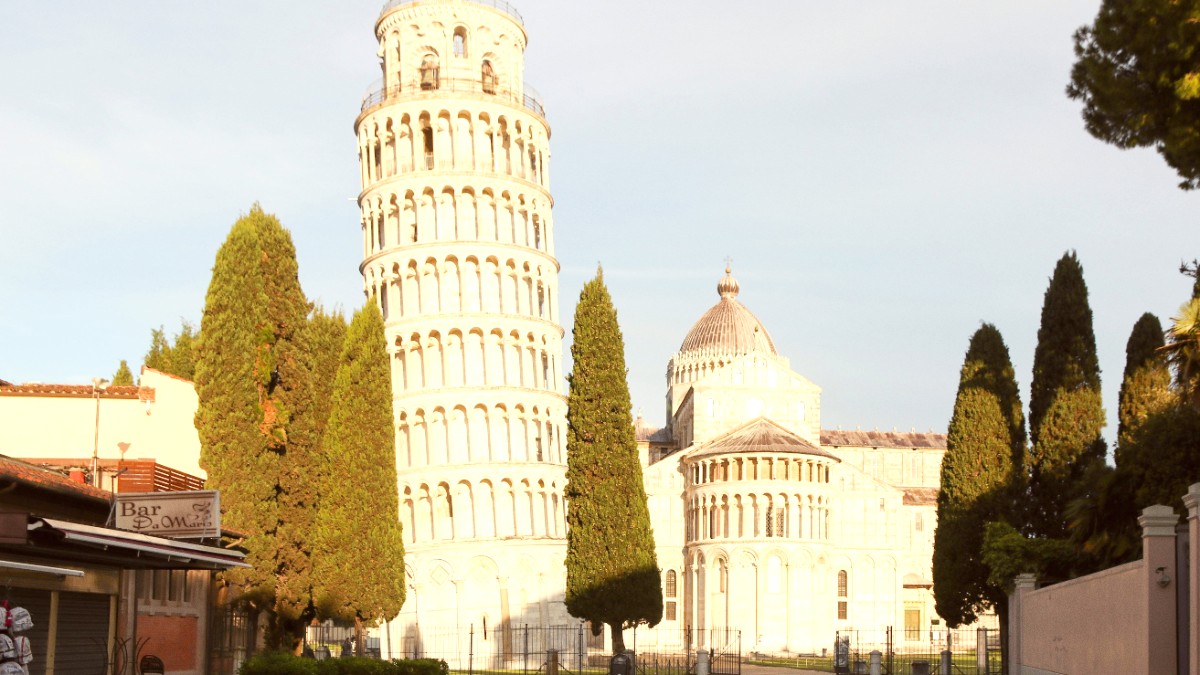
Tuscany, Italy
Tuscan cuisine has simplicity, fresh, and locally sourced ingredients. It is rooted in peasant traditions, prioritizing robust flavor from natural goodness. The region's agricultural bounty provides a foundation for seasonal dishes. Olive oil is central to nearly every dish, providing a rich base.
Tuscan bread (pane toscano) is notably unsalted, a tradition from a historical salt tax. Its plainness makes it an ideal accompaniment for savory dishes, meats, and cheeses. Pisa's historical maritime connections mean subtle seafood influences, though the core remains land-based Tuscan fare.
Seasonal vegetables are prominent, with beans (cannellini), tomatoes, zucchini, eggplant, and cavolo nero (black cabbage) frequently appearing.
Chianina beef for bistecca alla Fiorentina. Wild boar (cinghiale) often in ragù. Rabbit and various game meats also common.
Cecina, a chickpea flour pancake unique to Pisa. Bordatino alla pisana (cornmeal and bean soup) and baccalà con porri (cod with leeks) show local twists.
A thin, savory pancake made from chickpea flour, baked until crispy. A Pisan specialty.
Find at: "Cecinai" or local bakeries (forno) and pizzerias.
Hearty Tuscan soups with stale bread, tomatoes (Pappa) or beans and vegetables (Ribollita).
Find at: Traditional trattorias and osterias.
Thick-cut, rare T-bone steak or rich wild boar ragù with pasta.
Find at: Steakhouses (bisteccherie) and traditional Tuscan restaurants.
Hard, crunchy almond biscuits, traditionally dipped in Vin Santo.
Authentic Italian ice cream. Look for "gelateria artigianale" for quality.
Pisa offers a range of dining experiences: fine dining for refined Tuscan cuisine, mid-range trattorias/osterias/ristorantes for traditional fare, and budget eateries like pizzerias and "cecinai" for quick bites.
Vegetarian options are relatively easy to find. Many pasta dishes, vegetable soups, salads, and vegetable side dishes are naturally vegetarian. Vegan choices are improving but may require clear communication.
Awareness of gluten intolerance (celiachia) is growing. Many pizzerias offer gluten-free crusts. Communicate any allergies clearly to restaurant staff.
Learn to prepare traditional Tuscan dishes from fresh pasta to tiramisu. Many classes include market visits and tasting your creations.
Offers hands-on cultural immersion.
Guided walking tours focusing on Pisan culinary specialties. Includes tastings of cecina, local cheeses, cured meats, olive oil, and wine.
Provides insight into the city's food culture.
Tours of farms, wine tastings, olive oil production insights.
Day trips to vineyards in Chianti or other Tuscan wine areas.
Seasonal sagre celebrating specific products like truffles or chestnuts.
Enjoying a quick, authentic local snack at a traditional "cecinaio."
A phrasebook with a section on dietary needs can aid communication with restaurant staff.
Example: Italian Phrasebook
A guide to Italian wine can enhance your appreciation of local wines.
Example: Wine Folly Guide to Italian Wine
Enjoy an "aperitivo" (pre-dinner drink with complimentary snacks) at a local bar. This is a beloved Italian custom that sometimes acts as a light meal.
Embrace the local food culture. Try new dishes, ask questions about ingredients, and savor the slow pace of Italian dining. This deepens your travel experience.
Cod with leeks, a distinct Pisan dish demonstrating subtle seafood influences.
A traditional cornmeal and bean soup, a comforting local twist on Tuscan soups.
Prized ingredient, especially in autumn, adding an earthy flavor to pasta and meat dishes.
Feel comfortable ordering just one or two courses from the menu. It's not a requirement to order a full multi-course meal.
Enjoy at your own pace.
Dining is a cultural and social event. Take your time, enjoy conversations, and appreciate the freshness of the ingredients.
Let it be a highlight of your trip.
A historic covered food market in the city center. Excellent for fresh produce, local cheeses, cured meats, and bread.
Ideal for assembling picnic lunches or stocking up if your accommodation includes a kitchen.
Offers a lively, authentic atmosphere, a true glimpse into local commerce and daily life.
Do not expect free tap water in restaurants; bottled water is standard.